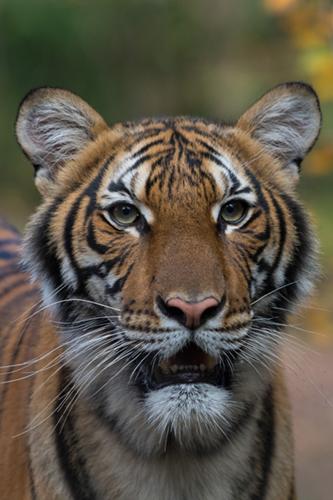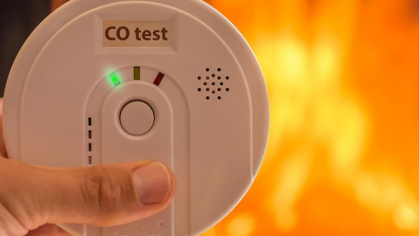How Did a Bronx Zoo Tiger Contract COVID-19?
Scientists at Rutgers-Newark say there is little evidence supporting claims of illness or transmission in house pets

A tiger at the Bronx Zoo recently tested positive for COVID-19, raising concerns about how the virus is transmitted between humans and animals. Angelo Soto-Centeno, an assistant professor of biology at Rutgers-Newark and postdoctoral associate Camilo Calderón-Acevedo answer some questions about the recent news.
What are the origins of the virus and how did it jump from animals to humans? Should we be concerned about something similar starting in the United States?
Soto-Centeno: This specific coronavirus, first documented in Wuhan, China, is believed to have begun within a Horseshoe Bat that transmitted it to a Sunda Pangolin, an illegally trafficked mammal. Coronaviruses are common in wildlife and occasionally some have become zoonotic, jumping from animals to humans. Only a few—SARS and MERS—however, are documented to cause an increased immune response in humans, like in COVID-19. The origins of past outbreaks help us understand where a potential bat viral host may come from. As of now, for example, none of the nine bat species living in our New Jersey backyards are known to pose any threat nor are documented to be the source of a potentially zoonotic virus. This, along with the low density in which our local bats currently exist and the low probability of encountering one in the wild, make the odds of disease spillover in our area increasingly rare.
How was COVID-19 transmitted to a tiger and does this transmission to an animal have any implications for pet owners?
Calderón-Acevedo: Recent news from the Bronx Zoo shows an infected tiger as a case of human-to-cat transmission. Several other big cats also show symptoms of respiratory illness likely originating from an asymptomatic keeper who was tending for the animals. Some house cats living with SARS CoV-2 (the virus that causes COVID-19)-positive owners in Europe tested positive for COVID-19 and have caused worry in many pet owners throughout the world. The SARS CoV-2 virus can indeed infect felines (to date, no canine has tested positive for this virus); however, pet owners should not be alarmed by these preliminary findings. A recent unpublished study found that only cats and ferrets are susceptible to SARS CoV-2 after deliberate infection. None of the cats showed symptoms of illness, suggesting that COVID-19 might not be very transmissible in cats. The study also showed data from other animals like dogs, pigs and poultry, but they appeared to be more resistant to viral infection. At the moment, scant evidence remains supporting claims of illness or transmission in house pets. According to the most recent data, the spread of COVID-19 occurs only via human-to-human contact.
If someone tests positive for the coronavirus should they be concerned about transferring it to their pets?
Soto-Centeno: At the moment there is no evidence of illness or back transmission from pets to humans. Notwithstanding, pet owners should still err on the side of caution and follow basic hygiene methods suggested by the Centers for Disease Control and Prevention (CDC). In a way, any pet could act as a surface for the virus; therefore, an ill person should limit contact with house pets, maintain distance and follow hygienic measures until more information is known about the virus. If you tested positive to COVID-19 and have a pet, you should ask a friend or family member to take care of feeding, walking, and playing with your pet companion. If you are the owner of a service animal who must stay with your pet, the American Veterinary Medical Association suggests not sharing food or utensils, kissing or hugging your pet, and washing your hands before and after every interaction with your pet, and always ask your veterinarian if you have questions about your pet’s health.
Meet the Researchers:
Angelo Soto-Centeno is an assistant professor of biology at Rutgers–Newark. His research specializes in understanding Neotropical mammal diversity and the threats that lead to bat species loss.
Camilo Calderón-Acevedo is a postdoctoral associate at Rutgers–Newark. His research focuses on Neotropical mammal cryptic diversity and the phylogenetic patterns of bat morphology.


